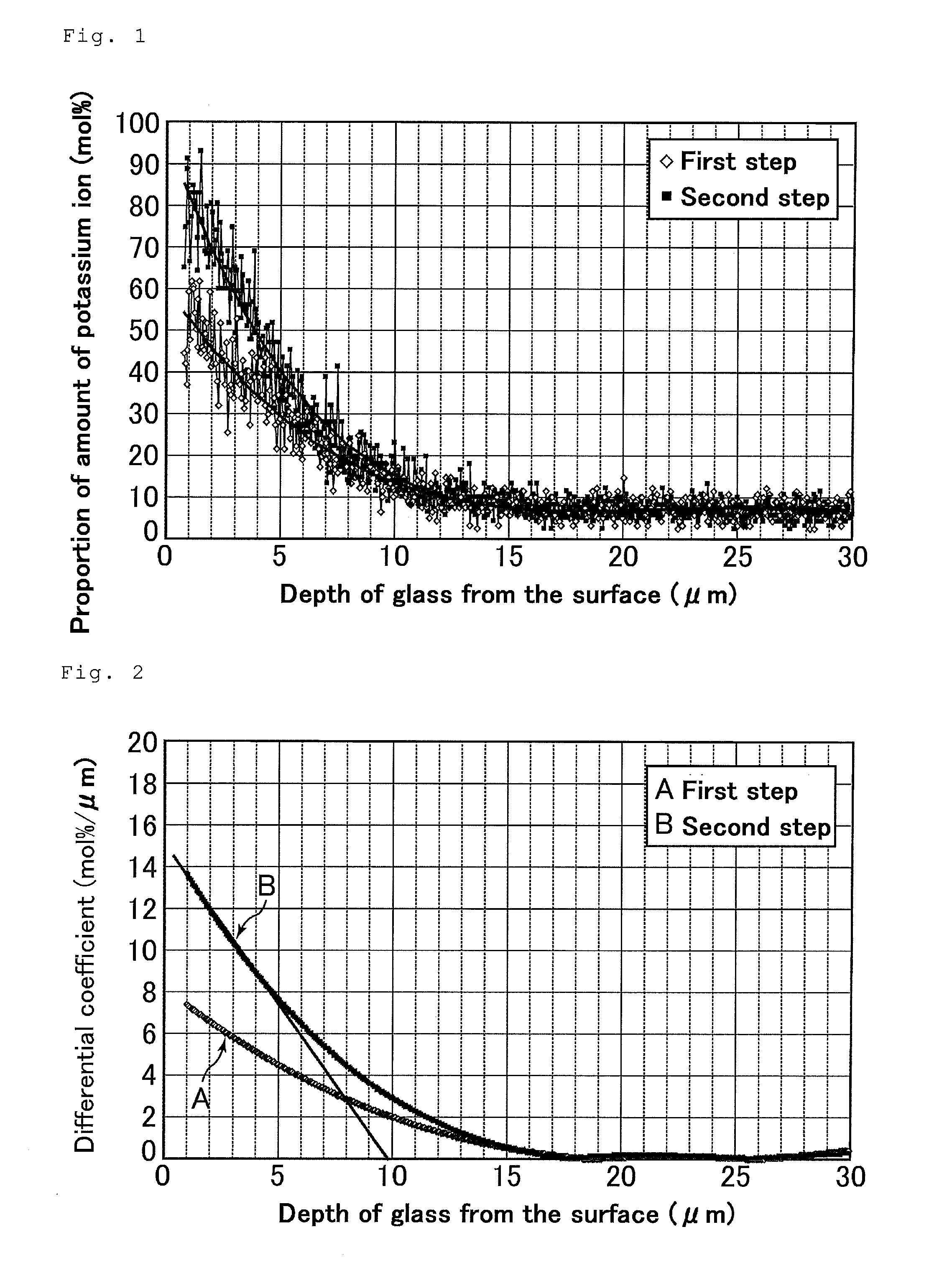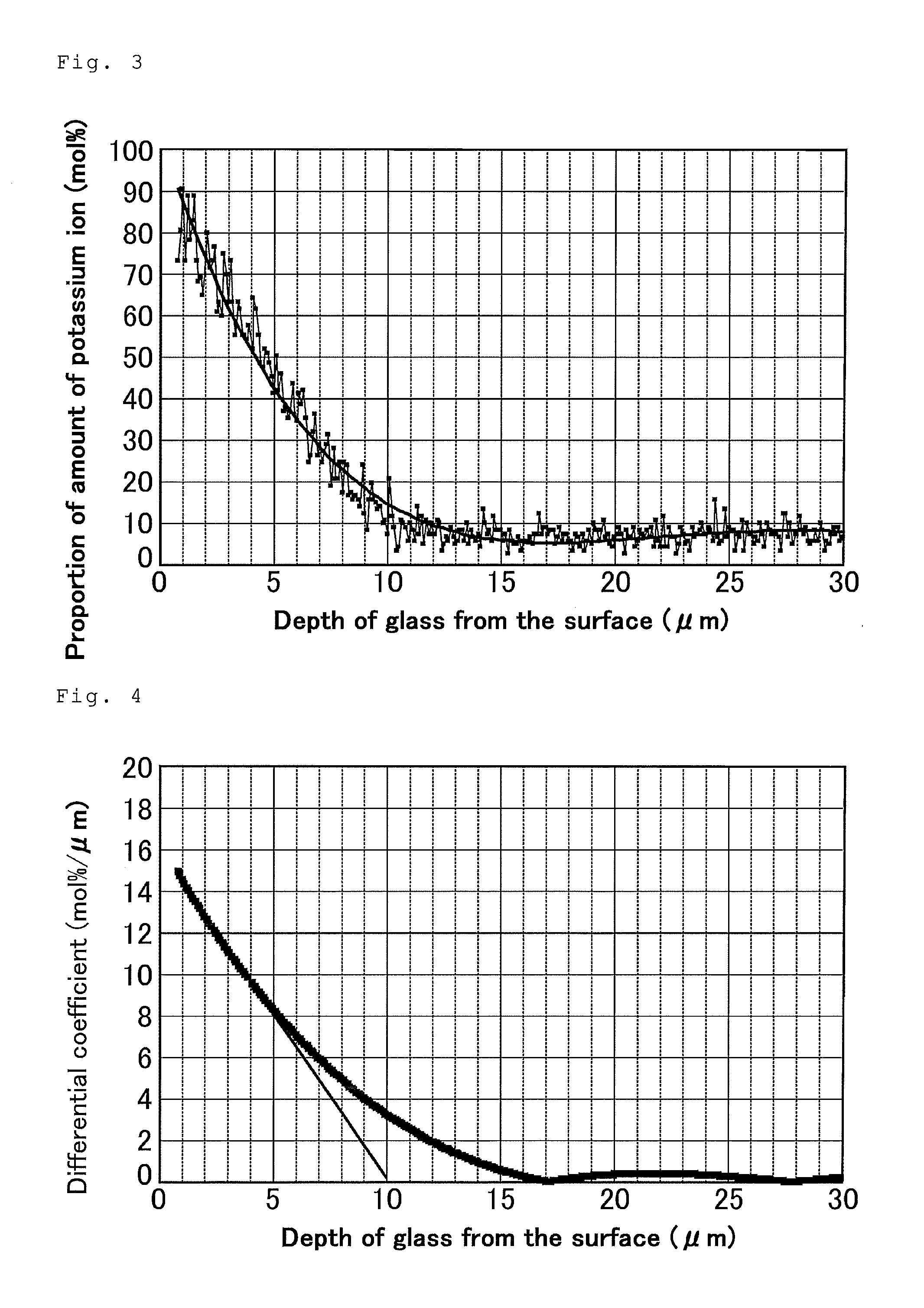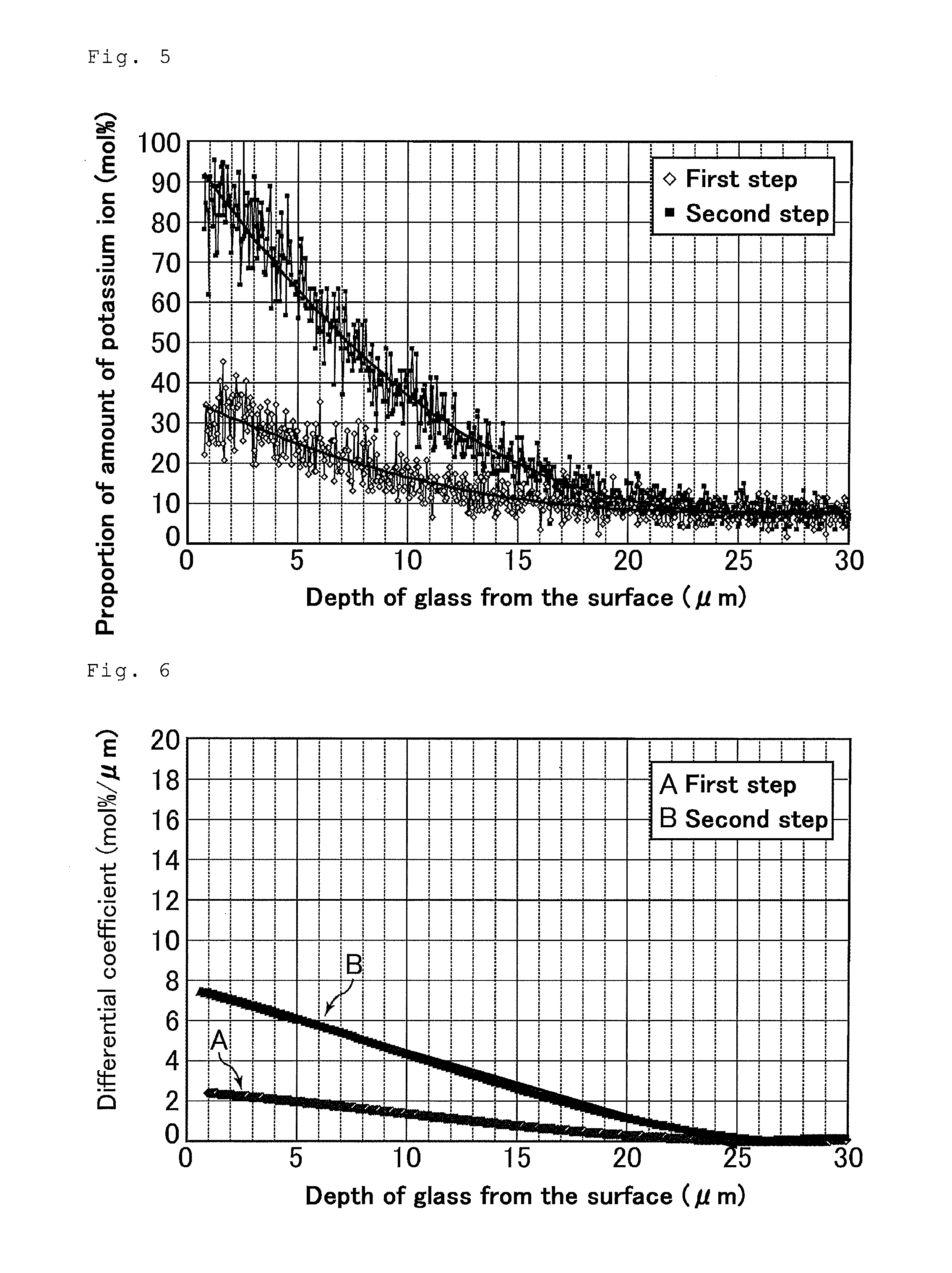Chemically strengthened glass and method for producing same
- Summary
- Abstract
- Description
- Claims
- Application Information
AI Technical Summary
Benefits of technology
Problems solved by technology
Method used
Image
Examples
example 1
(1) Preparation of Chemically Strengthened Glass
[0158]A 1.1-mm thick soda-lime glass (SiO2: 71.6%, Na2O: 12.5%, K2O: 1.3%, CaO: 8.5%, MgO: 3.6%, Al2O3: 2.1%, Fe2O3: 0.10%, SO3: 0.3% (on a mass basis)) was prepared by a float process, and an about 80-mm diameter disc substrate (hereinafter, referred to as glass substrate) was prepared therefrom.
[0159]The resulting glass substrate was submerged in a molten salt (first salt, proportion P: 20 mol %) bath composed of a mixture of 80 mol % of potassium nitrate and 20 mol % of sodium nitrate at a constant temperature of 483° C. for 120 minutes, as a first step.
[0160]The glass substrate was then taken out from the bath, and the surface of the substrate was washed and dried.
[0161]In a subsequent second step, the dried glass substrate was submerged in a molten salt (second salt, proportion Q: 0 mol %) bath composed of 100 mol % of potassium nitrate at a constant temperature of 443° C. for 60 minutes.
[0162]Thus, through the above steps, a chem...
examples 2 to 4
[0181]Chemically strengthened glasses were prepared as in Example 1 except that, the temperature of the first salt used in the first step and the proportion P in the first salt were changed, and the temperature of the second salt used in the second step and the proportion Q in the second salt were changed, in accordance with Table 1. The obtained chemically strengthened glasses were evaluated. Table 1 also shows the depth of the compressive stress layer formed through the first step.
TABLE 1Chemical strengthening conditionEvaluation of chemicallyFirst stepstrengthened glassDepth of compressiveSurfaceDepth ofstress layer formedSecond stepcompressivecompressiveProportion PTemperatureTimethrough first stepProportion QTemperatureTimestressstress layer(mol %)(° C.)(min)(μm)(mol %)(° C.)(min)(MPa)(μm)Example 1204831201504436072013Example 2104831201604436064015Example 3504831201204436081010Example 4305131202304436074016Comparative0463 90————55011Example 1Comparative40460 16 hours260460 4 ho...
examples 5 to 25
[0184]Chemically strengthened glasses after the first step were each obtained through the first step as in Example 1 except that the temperature of the salt in the first step was controlled in the range of 400 to 530° C. depending on the proportion P so that a specific depth (5 to 23 μm) of a compressive stress layer was formed at the surface of the glass after the first step.
[0185]Next, the chemically strengthened glasses after the second step were each obtained through the second step as in Example 1 except that the temperature of the salt was controlled in the range of 380 to 500° C. depending on the proportion Q so that, after the second step, the surface compressive stress was 600 to 900 MPa and the compressive stress layer formed at the surface of the glass had a depth of 5 to 20 μm.
[0186]A total time period of the contact of the glass article with the first salt in the first step and the contact of the glass article with the second salt in the second step was controlled in th...
PUM
| Property | Measurement | Unit |
|---|---|---|
| Length | aaaaa | aaaaa |
| Length | aaaaa | aaaaa |
| Length | aaaaa | aaaaa |
Abstract
Description
Claims
Application Information
 Login to View More
Login to View More - R&D
- Intellectual Property
- Life Sciences
- Materials
- Tech Scout
- Unparalleled Data Quality
- Higher Quality Content
- 60% Fewer Hallucinations
Browse by: Latest US Patents, China's latest patents, Technical Efficacy Thesaurus, Application Domain, Technology Topic, Popular Technical Reports.
© 2025 PatSnap. All rights reserved.Legal|Privacy policy|Modern Slavery Act Transparency Statement|Sitemap|About US| Contact US: help@patsnap.com



